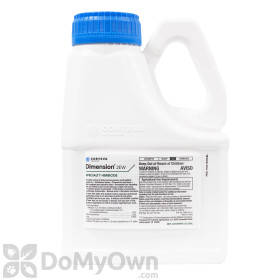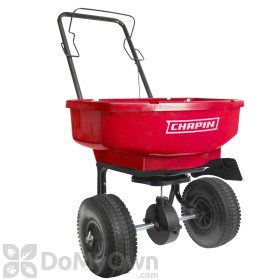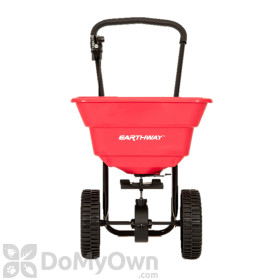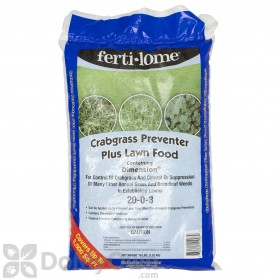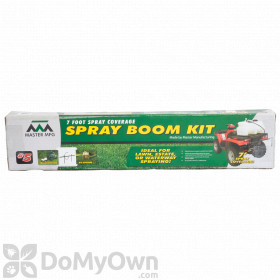Removing weeds from your lawn can be hard work. Pull weeds today, and new weeds will pop up in their place tomorrow. Mow the lawn, and see weeds in your new grass growth. Add new plants to your lawn and new weeds follow.
But there is a way to eliminate weeds before they grow: a spring pre-emergent herbicide treatment. Read below to learn what pre-emergents are, how they work, and how you can apply them to your yard to prevent an infestation of weeds this year.
This guide will cover the spring pre-emergent topics below. Click on any link to jump ahead to that section:
What are Spring Pre-Emergents?

Like fall pre-emergent herbicide applications, spring pre-emergent treatments are herbicides that prevent weeds from growing. As their name implies, you need to apply the herbicides before weeds like crabgrass, spurge, and goosegrass emerge in the spring, otherwise they will not be as effective and weeds may still grow.
The herbicides are applied to your lawn and then (typically) watered in. The herbicide will penetrate the top inch or two of the soil, forming a protective barrier.
In the spring as the ground heats up and weeds begin to germinate, the weeds will hit the pre-emergent barrier in the soil and die. Essentially, the pre-emergent is killing the weed while it is still underground, before it can fully grow and appear in your lawn.
Which Pre-Emergent Treatment is Best for My Lawn?

When purchasing a pre-emergent, it is important to know what type of grass you have. Most pre-emergents can only be used on certain grass types, meaning they could damage your lawn if the herbicide is not labeled for your grass type. For instance, a product labeled for Bermuda grass may damage a lawn of fescue grass, and vice-versa. Always read the label of your pre-emergent herbicide to determine if it is compatible with your grass type.
Once you know what type of grass you have, you can then narrow down your pre-emergent selection based on the weeds that grow in your lawn. If you have had crabgrass before, you should select a pre-emergent labeled for crabgrass. If you have had spurge, choose a pre-emergent labeled for spurge. Some pre-emergents will treat a broad spectrum of different types of weeds and some will only treat one or two. If you do not know what type of weeds will grow on your lawn, an herbicide labeled for a broad range of weeds is a smart choice. Be sure to have any weeds that do appear in your lawn during the spring and summer identified so you will know what type of weeds to target the following year.
Pre-emergent herbicides are typically categorized as selective and non-selective.
Selective pre-emergent herbicides only prevent certain weeds from growing. For example, a selective herbicide may be labeled for various broadleaf weeds (clover, chickweed, etc.). That means the selective herbicide will prevent broadleaf weeds and only broadleaf weeds from growing. Your grass will be safe.
Non-selective herbicides will prevent all plants they come in contact with from growing. This could include the grass on your lawn, flowers, and any other plants in your yard. Non-selective pre-emergent herbicides are typically used on gravel driveways, cracks in walkways and driveways, and along fence lines.
You can also narrow down your choice of spring pre-emergent herbicide application by the way the herbicide is applied to the lawn. Liquid pre-emergent herbicides are mixed with water in a sprayer and then sprayed over the lawn while granular pre-emergent herbicides are applied to the lawn using a granular spreader or a portable spreader.
When to Apply Spring Pre-Emergents?
You will need to apply your pre-emergent spring application to your lawn before the temperatures warm. The exact timing of when to apply your pre-emergent herbicide varies depending on where you live.
The general rule is to apply your pre-emergent herbicide treatment after the ground has thawed from the winter but before the temperature of your soil reaches 55 degrees, as that is when crabgrass begins to germinate. Other weeds will germinate when the soil temperature is between 55 and 65 degrees. You can use a soil thermometer to determine the temperature of your lawn. You will want to measure the temperature of the soil a few inches below ground.
If applied after the ground soil is above 55 degrees, the spring application of pre-emergent herbicides will be less effective. A post-emergent herbicide treatment would then be needed.
Based on this temperature, that means your pre-emergent may be applied as early as the first week of February if you live in the South or in the middle of March, if you live in the North. Refer to our lawn care schedule guides for more accurate timing of when to apply your pre-emergent spring treatment.
How to Apply Pre-Emergents
Granular Application
Granular pre-emergent herbicides are applied with a granular spreader. Granular spreaders can either be broadcast spreaders, meaning they are pushed, or portable, meaning they are hand-held. Watch the video below to learn more about calibrating and using a granular spreader.
To use a broadcast granular spreader:
1. Set the spreader to the setting recommended on the label of the herbicide and fill your spreader with the granules.
2. Place your spreader on the grass of your lawn, next to your driveway or sidewalk. Place the spreader guard down to prevent granules from being thrown onto the concrete. Walk the length of your lawn. If your spreader requires it, pull the hand trigger to allow the granules to be released.
3. Once you have finished the first length of your yard, open the spreader guard and position the spreader a few feet away from the first "row" that you walked. Walk the length of the lawn again, this time in the opposite direction of the first pass.
4. Continue walking back and forth across your lawn in rows to cover the entire lawn in granules. With each pass, make sure the granules reach the tire marks of the previous row. This will ensure an even application of the granules.
5. Continue until your entire lawn is evenly covered in granules.
6. Read the label of your pre-emergent herbicide for instructions on if and when to water in the pre-emergent. Typically, pre-emergents should be watered in (meaning, the lawn should be wet down) within 3 days of application. If it is going to rain shortly after your application, you can skip using a hose, letting mother nature do the watering.
To use a hand-held or portable spreader:
1. Fill the spreader with your pre-emergent herbicide granules and walk back and forth in lines across your lawn while cranking or pressing the handle of the spreader. The goal is to apply an even layer of granules across the lawn. The granules do not have to cover every inch of lawn, but they should be evenly spread. Water in the granules as needed.
Products needed for Method 1
Liquid Application
Most homeowners will apply liquid pre-emergent herbicides with a hand pump sprayer or a backpack sprayer. To apply a spring application of liquid pre-emergent:
1. Read the label of your herbicide to determine the amount of water needed for the size of your lawn. While wearing long sleeves, closed toe shoes, gloves, and protective eye goggles, mix the amount of water and herbicide needed in your sprayer. Shake your sprayer to thoroughly mix your water and herbicide together.
You can also add in a spray indicator dye to this solution. The dye will temporarily color your grass, letting you know where you have and have not sprayed.
2. Walk the area of your lawn while spraying the herbicide. Walk in a line, back, and forth, to be sure you have given the lawn an even coating of herbicide and have not missed any areas.
Homeowners with large yards or several acres of property may want to use a carted, tow-behind sprayer or a boom sprayer for their liquid pre-emergent application.
Products needed for Method 2

If done at the right time in the proper manner, your spring application of pre-emergent herbicides should reduce the amount of weeds that appear in your lawn during the spring and summer dramatically. A post-emergent herbicide treatment can be used for any weeds that do appear once the weather is warm.
A fall pre-emergent application will also be needed for year-round weed control.





